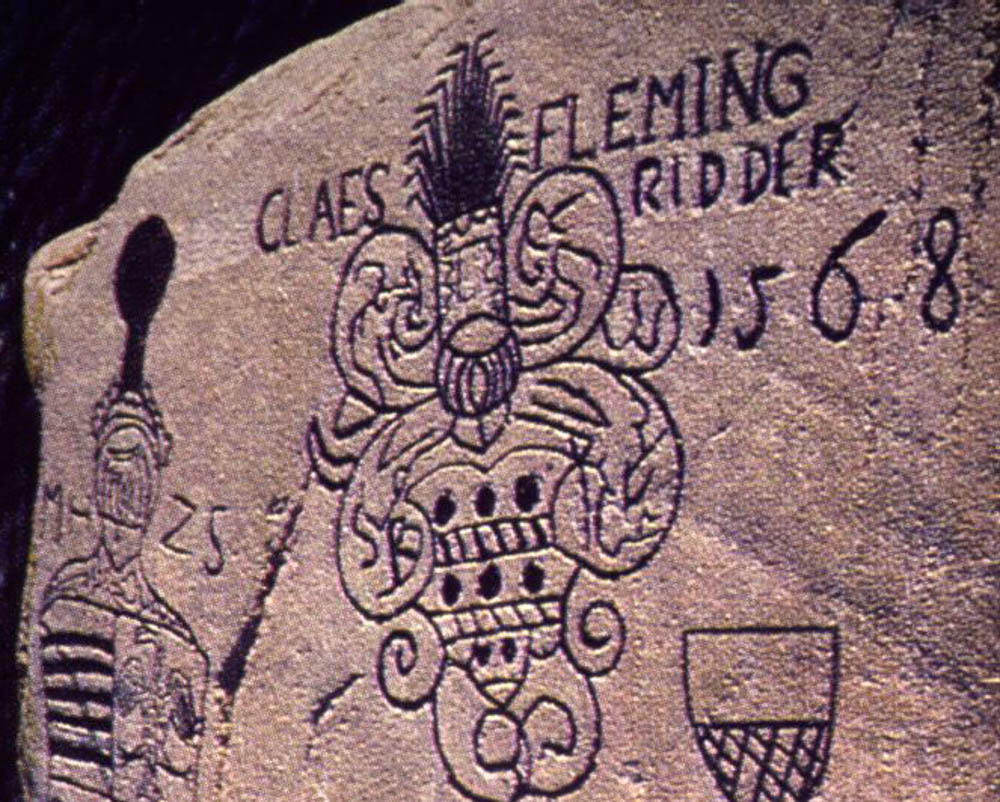
Missä päin Hankoa tai ylipäänsä Suomessa voi nähdä niin monen tunnetun henkilön nimet kuin Hauensuolella? Tämän luonnonsataman kallioille on erityisesti 1500- ja 1600-luvuilla merenkulkijat jättäneet jälkensä odotellessaan parempia tuulia. Täältä löytyy yli 600 kaiverrusta, joko niminä tai sukuvaakunoina.
Hauensuolesta muodostui luonnollinen satama 1400-luvulla kun Kappelisatama oli käynyt liian matalaksi isommille aluksille. Olaus Magnus kirjoitti vuonna 1555 Historia de gentibus septentrionalibus eli Pohjoisten kansojen historia -kirjassa suurenmoisesta satamasta, joka on niin mieluisa ja turvallinen, ettei koko Pohjolan merialueilla, ehkäpä ei avaralla valtamerelläkään ole toista, jota saattaisi verrata siihen. Sillä joka suunnalta purjehtivat se ottaa esteittä syliinsä ja suojaa heitä luonnollisena varustuksena sekä myrskyiltä että vihollisen laivastolta. Olaus Magnus jatkaa, että tämä satama näet sijaitsee laajan linnoituksen tavoin vuorien ja laaksojen keskessä luonnonkauniilla paikalla. Sen kallioissa on ikivanhoja gööttiläisten ja svealaisten sankarien vaakunatunnuksia, yhtenäisessä järjestyksessä, mutta muinaiseen yksinkertaiseen tapaan hakattuina lähinnä muistuttamassa myöhemmille sukupolville.
Olaus Magnus oli tunnettu siitä, että hän liioitteli reippaasti, mutta se piti paikkansa, että täältä löytyy ruotsalaisten suurmiesten vaakunoita ja nimiä, vaikkakin enemmän vasta myöhemmältä ajalta. He olivat joko sotilaita tai virkamiehiä, jotka olivat matkalla Baltiaan Ruotsista, ja helpointa oli kulkea Hankoniemen kautta. Täältä löytyy historian kirjoista tuttuja nimiä kuten Klaus Fleming, joka oli Suomen käskynhaltija 1590-luvulla. Sotilaista voi mainita 30-vuotisen sodasta tutut Åke Tott ja Torsten Stålhandske. Eniten vaakunoita löytyy Oxenstierna-suvulta, jonka jäsenet olivat sekä virkamiehiä ja sotilaita. Heistä voi mainita muun muassa Axel Oxenstierna, joka oli valtakunnankansleri, ja käytännössä Ruotsin hallitsija kun kuningatar Kristiina oli alaikäinen 1630-luvulla.
Hangon museo on yhdessä Hangon museon ystävien kanssa tehnyt töitä tämän ainutlaatuisen alueen säilyttämiseksi. Kalliot ovat täynnä kaiverruksia, mutta niitä on lähes mahdoton nähdä enää kun jäkälät kasvavat alueella. Nyt tutkitaan, mitä voidaan tehdä jäkäleiden poistamiseksi, ilman, että kallio rapautuu pois, ja siten myös kaiverrukset.

Text: Museum director Laura Lotta Andersson.
Lähde: Olaus Magnus Gothus, Pohjoisten kansojen historia, Suomea koskevat kuvaukset, suomentanut Kaarle Hirvonen, Keuruu 1973.
Kuvat: Aalto-yliopiston arkisto, opetusdiakokoelma, suomalainen maisema. Tirilä, S. Hauensuolen kalliohakkausten dokumentointi, Museovirasto. Hangon museo.


